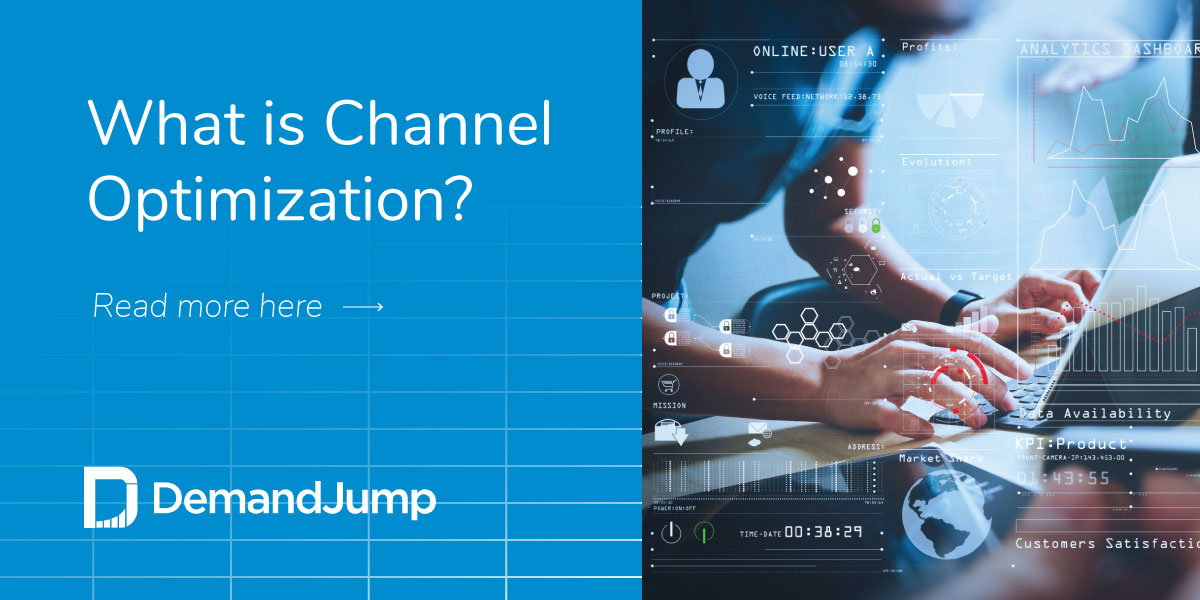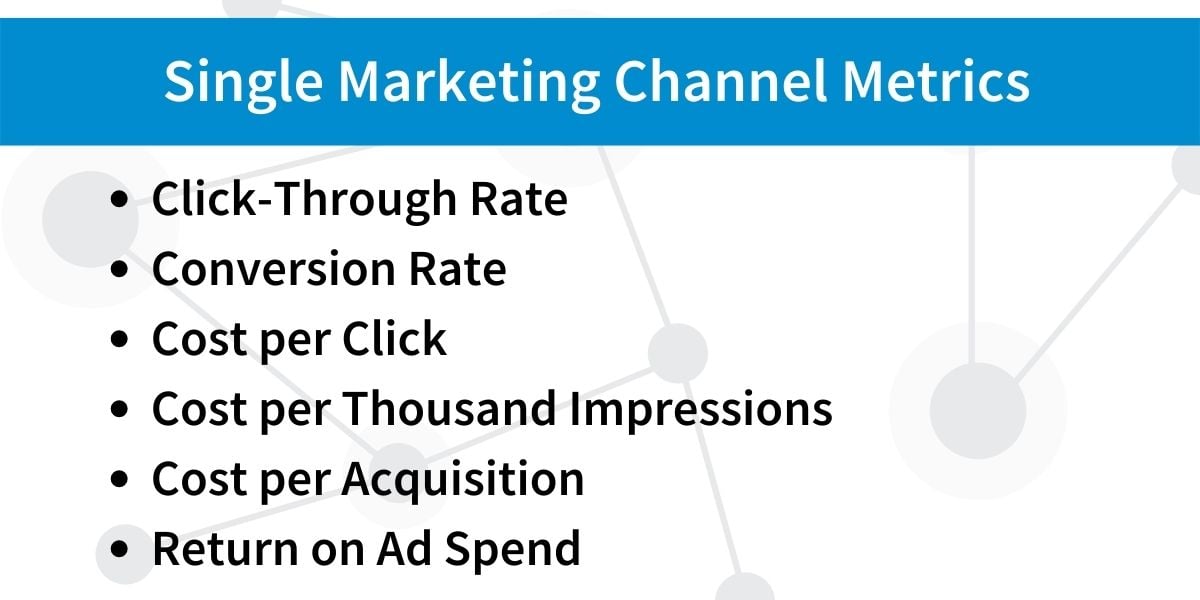What is Channel Optimization?
May 1, 2020 •Cameron McAllister

Digital marketers today have access to more channels than ever before. These channels present worlds of new opportunities to reach and engage new prospects and potential customers, but each channel also brings with it a unique set of challenges when it comes to the fine-tuning and optimization required to achieve the highest return.
What are digital marketing channels?
Digital marketing channels are defined as groups of similar online mediums through which prospective customers may reach a business or a business’s website. Common examples of digital marketing channels include Email, Organic Search, Paid Search, Social Media, Programmatic Display and Retargeting.
Most marketing channels can either be referred to as inbound or outbound. These terms refer to the initiation of the engagement between the consumer and business. Within Inbound marketing channels, the consumer is initiating contact with the business. Within Outbound channels, the business is initiating contact with the consumer.
Another common differentiation between marketing channels is ‘paid’ vs. ‘organic’. An organic marketing channel is a channel that does not require a direct media investment to promote the business’s message, while a paid marketing channel will require some budget in order to operate. It’s also important to note that while organic channels might not require media spend, they will often require an investment in the form of time, effort, and in some cases, technology.
While no two channels operate the same, all channels - inbound and outbound, paid and organic - will come with optimizations that can be made in order to make it easier for customers to find businesses, and to allow businesses to proactively find new customers.
Channel Optimization
Channel optimization can be divided into two groups:
- Single-channel optimizations
- Cross-channel optimizations
In the following sections, we’ll break down each of these activities, including examples of each across common marketing channels.
What is Channel Optimization?
Channel optimization is a process through which tactics are applied to improve the customer experience, increase interactions, and drive incremental revenue within a single marketing channel.
Within a single marketing channel, you will likely have access to a number of different performance metrics. Common metrics include impressions, clicks, conversions, click-through rate (CTR), conversion rate (CVR), cost per click (CPC), cost per thousand impressions (CPM), cost per acquisition (CPA), and return on ad spend (ROAS). Depending on the goals that you have set for the channel that you are looking to optimize, some of these metrics may be more important than others.

Within a channel where your main priority is to reach and engage as many new consumers as possible, you may be focused on impressions, CPM, and CTR as primary measures to evaluate how many people you’re reaching, how much you’re paying to reach them, and how often they’re engaging with your content.
To optimize a channel for these metrics, you’ll want to test and compare individual tactics within the channel to monitor and learn which efforts are most efficient. You might replicate and expand on highly-efficient tactics while cutting poor-performing tactics to gradually begin to optimize your channel to be more effective at reaching & engaging customers.
Now, as most channels consist of multiple mediums and tactics, it is important to note that you should rarely have an entire channel dedicated to only maximizing reach or only maximizing conversions. Most channels will instead contain elements that touch each stage of the marketing funnel.
So, in order to fully optimize a single marketing channel you should start by setting individual goals for each of the funnel stages and structuring specific tactics to support these goals within your channel. From there, collecting, analyzing, and applying data to improve the performance of your channel is the name of the game.
Now that you’re optimizing your channels individually, how do you leverage the strengths of each to be more effective in your holistic strategy? The answer is in cross-channel optimization.
[Click here to see a demo of DemandJump’s automated channel optimization product. Get AI generated insights into how you can optimize your existing marketing efforts.]
What is cross-channel optimization?
Cross-channel optimization refers to the strategic integration of tactics across multiple marketing channels to improve the customer experience as they navigate from channel to channel.
As mentioned above, most marketing channels will play varying roles at each stage of the customer journey. But, rarely will a customer remain within a single channel from their first interaction with a brand to the time that they purchase.
Think back to the last time you bought something online. Where did you first hear about the product or brand that you purchased? And how did you arrive on the website that you purchased from, right before you bought? Were those two channels the same?
Maybe you saw a Facebook ad for a pair of sunglasses and thought nothing of it. After all, you already have sunglasses that you’re perfectly happy with (although you must admit that you did like the way those sunglasses looked in the ad). Fast-forward two weeks later, and whaddaya know? You can’t find your old sunglasses anywhere - so, what do you do? You hop on Google and search for “sunglasses”. Low and behold - there’s that same brand that you saw on Facebook! So you click on the ad and check out the site. The pair you like is a little pricey, but lucky you, the website is offering 20% off if you give them your email address. So, you enter your email and you decide to sleep on it. The next day, you wake up and check the forecast - nothing but sun for the next week. Of course. So you go to your email, find the 20% off coupon, and you pull the trigger on those new shades.

In this scenario, you interacted with 3 channels over the course of two weeks before making a purchase. You discovered a brand on social media, engaged with them via paid search, and finally made a purchase through the encouragement of an email. Millions of unique paths like this are crafted every day with consumers. So, it’s more important than ever for marketers to understand which channels are playing the largest roles at each stage of this dynamic customer journey. Some channels may be more efficient than others when it comes to maximizing reach, while other channels may provide the highest conversion rate when it comes time for your customer to buy.
Optimizing across channels is about playing to your channels’ strengths and about personalizing the next interaction with each consumer based on previous experiences. This is why it’s important to track goals for every funnel stage within every channel, while applying learnings from one channel to the next, anticipating and improving each next step.
Featured Articles
Categories
- Attribution Tracking (13)
- Channel Optimization (11)
- Consumer Insights (68)
- Content Marketing (251)
- Data Science (8)
- Digital Marketing (6)
- Digital Transformation (26)
- Enterprise (10)
- Lead Generation (14)
- Market Intelligence (8)
- Marketing Analytics (39)
- Marketing Attribution (57)
- Marketing Management (153)
- Marketing Operations (86)
- Organic Search (222)
- Paid Search (52)
- Pillar-Based Marketing (63)
- Programmatic Advertising (9)
- SaaS Content (14)
- SaaS Marketing (29)
- Search Marketing (111)
- SEO Keyword Research (28)
- SEO Pillar (18)
- SEO Strategy (46)
- SMB (5)
- Website Content (12)


